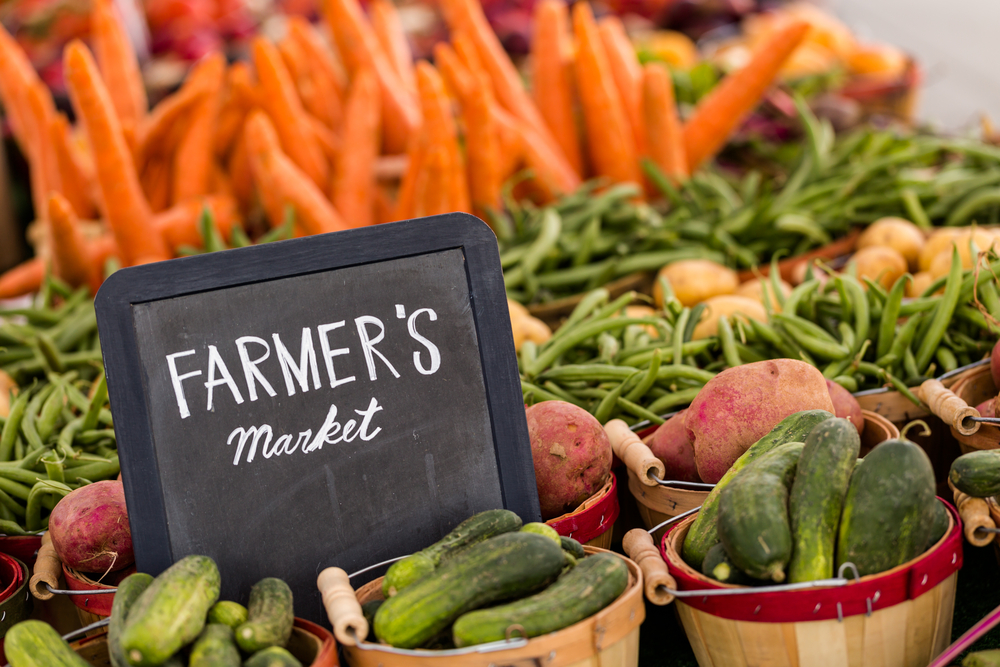
Who would not like to savour fresh locally produced food that not only looks good but tastes delicious. A farmer’s market is the right place to find local produce filled with seasonal freshness and a place to meet local growers and get flavourful produce. It a place where a group of farmer’s sell their produce once or twice a week in a designated area or a focal public location directly to consumers. These markets facilitate personal connections of mutual benefits between local growers, shoppers and communities.
Giving a thought of starting something alike as a producer yourself? Well a farmer’s market can be a place to start your own full time business or a part time weekend hustle. A great way to turn your hobbies of creating something or producing something into a lucrative full time or part business.
But before jumping into the idea it’s good to prepare and research some facts about the markets near you and what you would want to do in such a market place.
So here are 5 tips to help you get started with selling at a local farmer’s market.
1. Choose Your Produce
Selection of the produce that you want to trade in is very important. Whether it is locally produced fresh or seasonal fruits or veggies specific to your area or baked items like muffins, breads, pies, cookies or something from the arts and crafts like home-made soaps, jewelry, scented candles, body care items or anything from home-made jams, jellies, spreads, marmalades, honey anything. Range of products is not limited. It entirely depends on what your passionate about to produce and sell.
2. Compliance to local market rules and regulations
A thorough research of the local rules relating to such market is very important. For example, some markets require your commitment for the complete season, some for 6 months and likewise. In some markets you rent a spot on weekly basis, some not.
Go through the website of your farmer’s market. Understand the vendor requirements. Get in touch with local vendors ask them about your queries and how things are being done. Initially you can start with sharing a booth with an established vendor to have a better understanding of how things work.
As different markets have different set of rules or regulations do thorough research and do what needs to be done. For example, when dealing with perishables many markets require you to be certified, you keep such certificates in your booth which ensure what you sell is grown by you only. You are also required to meet certain health standards not only for the general public but also health inspectors. These standards may vary from state to state or even city to city.
3. Run It as a Business
Starting small and growing step by step by adding more items to your basket you will grow your business hence run it the way a business is run. Do register yourself, learn how to collect and pay taxes required in your state. Maintaining accurate records of income and expenses for income tax purposes.
4. Doing Your Homework
Depending on your product, you have to invest in some basic infrastructure that you will be putting up in the market such as: durable and sturdy tables, tents, commercial weighing produce, proper packaging material, labels, bags, trash bins, sanitation gloves, etc. Along with these you have to ensure the transportation of all your produce and your equipment safely to the market place. For example, if you’re selling baked goodies, or jams and jellies, many markets require you to produce them in commercial kitchens which are very expensive, some people rent church kitchens to save costs.
So to reduce costs you can get a license to produce from your home. But you will have to be ready for the occasional visits of health inspectors to check if your kitchen is working to the highest standards. With an upgraded license you can also preserves via mail or on consignment conditional you check your state’s health department licensing terms.
5. Competitive Pricing
Do the maths. Consider your production costs and the final prices that you will be offering to your consumers so that you have a profitable business. Prepare well in advance for every season to maximize sales. Your final pricing should include all the expenses including rent, transportation costs, etc.
Financial viability is crucial to keep your business running. Giving price breaks initially can help you place your produce in the market and also encouraging consumers to buy in bulk. For certain products you can also offer free samples to potential customers. If trading in non-perishable items, then ensure that you stock up in the months when there are no farmers market to increase inventory.
Some tit-bits to take care before heading towards the market – Have a detailed check list ready with you before leaving for the market place, including everything that you need to bring from the actual product to the things you need to set up your booth.
Present yourself well. Develop a unique niche for your product. If your product/produce is different from others, ensure that this differentiation is clear to the consumer walking by your booth. You can use some eye catching signage to grab attention. Be friendly and make sure your available to answer any questions from consumers. Engage them in conversation and tell them your about your produce.
Keeping all things in mind it’s very important to build relationships with your consumers and grow your business through those relationships. Plan ahead, research thoroughly and choose the right path. Setting up a booth in a farmer’s market can be a full time business or an excellent side hustle.

